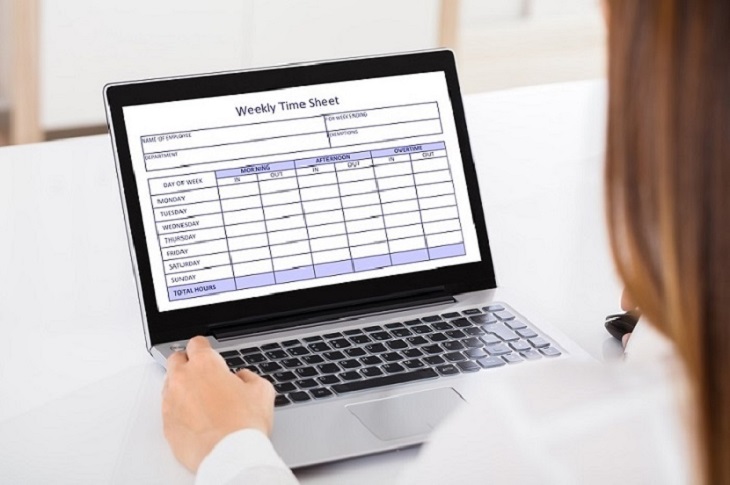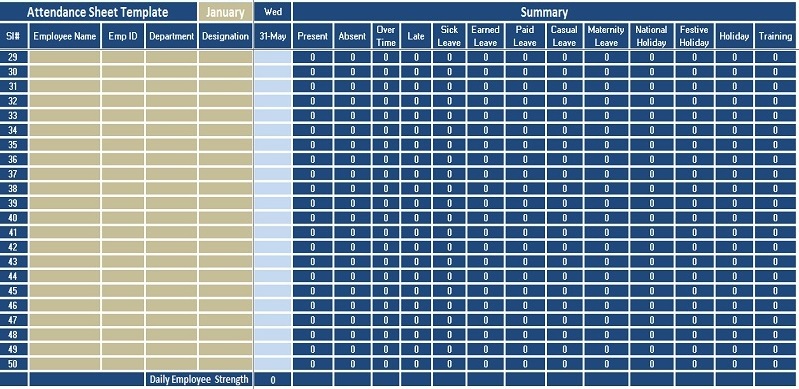Maximizing Efficiency: The Ultimate Guide to Employee Time Sheets
June 13, 2023In today's fast-paced business world, effective time management is crucial for success. Employee time sheets play a vital role in ensuring that work hours are accurately tracked and that productivity remains at optimal levels. In this comprehensive guide, we will explore the importance of employee time sheets, the different types available, and how to implement them in your business. We will also discuss strategies for ensuring time sheet accuracy and addressing common issues, as well as the future of time tracking technology.
Why Employee Time Sheets Matter?
Employee time sheets are essential for several reasons, including:
- Time management: Accurate time tracking helps employees manage their workload and allocate their time effectively.
- Productivity: By understanding how time is spent, managers can identify areas for improvement and implement strategies to boost productivity.
- Labor cost control: Time sheets help businesses monitor labor costs and make informed decisions about hiring, scheduling, and compensation.
- Attendance monitoring: Time sheets allow managers to track employee attendance and identify patterns of tardiness or absenteeism.
- Overtime management: Accurate time tracking ensures that employees are compensated for any overtime worked, which can help prevent burnout and maintain a healthy work-life balance.
- Compliance with labor laws: Time sheets are necessary for businesses to comply with labor laws and regulations related to employee work hours, breaks, and overtime pay.
Types of Employee Time Sheets
There are several different types of employee time sheets available, each with its own benefits and drawbacks:
- Manual/paper time sheets: These are the traditional method of time tracking, with employees manually recording their hours worked on paper forms. While they may be cost-effective, manual time sheets are prone to errors and can be time-consuming to process.
- Digital time sheets: These electronic time sheets can be accessed and updated online, streamlining the process and reducing the risk of errors. Digital time sheets can also be easily integrated with other HR and management systems.
- Biometric time sheets: These time sheets use biometric technology, such as fingerprint scanners or facial recognition, to verify employee identity and record work hours. This can help prevent time theft and buddy punching but may raise privacy concerns.
- Mobile/app-based time sheets: These time sheets allow employees to track their hours using a smartphone or tablet app, which can be especially helpful for remote or mobile workers.
- Time clocks: Traditional time clocks require employees to punch in and out using a physical card, while modern versions may use digital or biometric methods.
- Project-based time tracking: This type of time sheet is specifically designed for tracking the time spent on individual projects, making it useful for businesses that bill clients based on hours worked.
Time Sheet Software and Apps
Using time sheet software or apps can greatly improve the efficiency and accuracy of time tracking. Some popular options include TSheets, TimeCamp, Harvest, and Clockify. When choosing a time sheet solution, consider factors such as ease of use, integration with other systems, reporting capabilities, and mobile app availability.
Implementing Time Sheets in Your Business
To successfully implement time sheets in your business, follow these steps:
- Establish a time tracking policy: Clearly outline expectations for time sheet completion, submission, and review, as well as consequences for non-compliance.
- Train employees: Ensure that all employees understand how to use the chosen time sheet system and are aware of the time tracking policy.
- Set up a system for time sheet approvals: Designate managers or supervisors who will review and approve time sheets, and establish a consistent process for doing so.
- Streamline time sheet submission and review processes: Automate as much of the process as possible to reduce the burden on employees and managers.
Ensuring Time Sheet Accuracy
Regular audits, time rounding rules, and managing time sheet corrections can all help ensure that your time sheets are accurate. Encourage employee accountability by fostering a culture of honesty and transparency around time tracking.
Addressing Time Sheet Issues
Common time sheet issues include time theft, buddy punching, and time sheet padding. Implement strategies for prevention and detection, such as using biometric time sheets, conducting audits, and promoting a culture of integrity.
The Future of Time Tracking
As technology continues to evolve, advances in time sheet technology are likely to make time tracking even more efficient and accurate. Integration with other HR and management systems will become more seamless, and artificial intelligence and automation may play a larger role in time tracking processes.
Conclusion
In conclusion, employee time sheets are an essential tool for businesses to manage time, boost productivity, and control labor costs. By choosing the right type of time sheet system, implementing effective policies and processes, and addressing common issues, businesses can maximize the benefits of time tracking and set themselves up for success in today's competitive marketplace.





0 comments